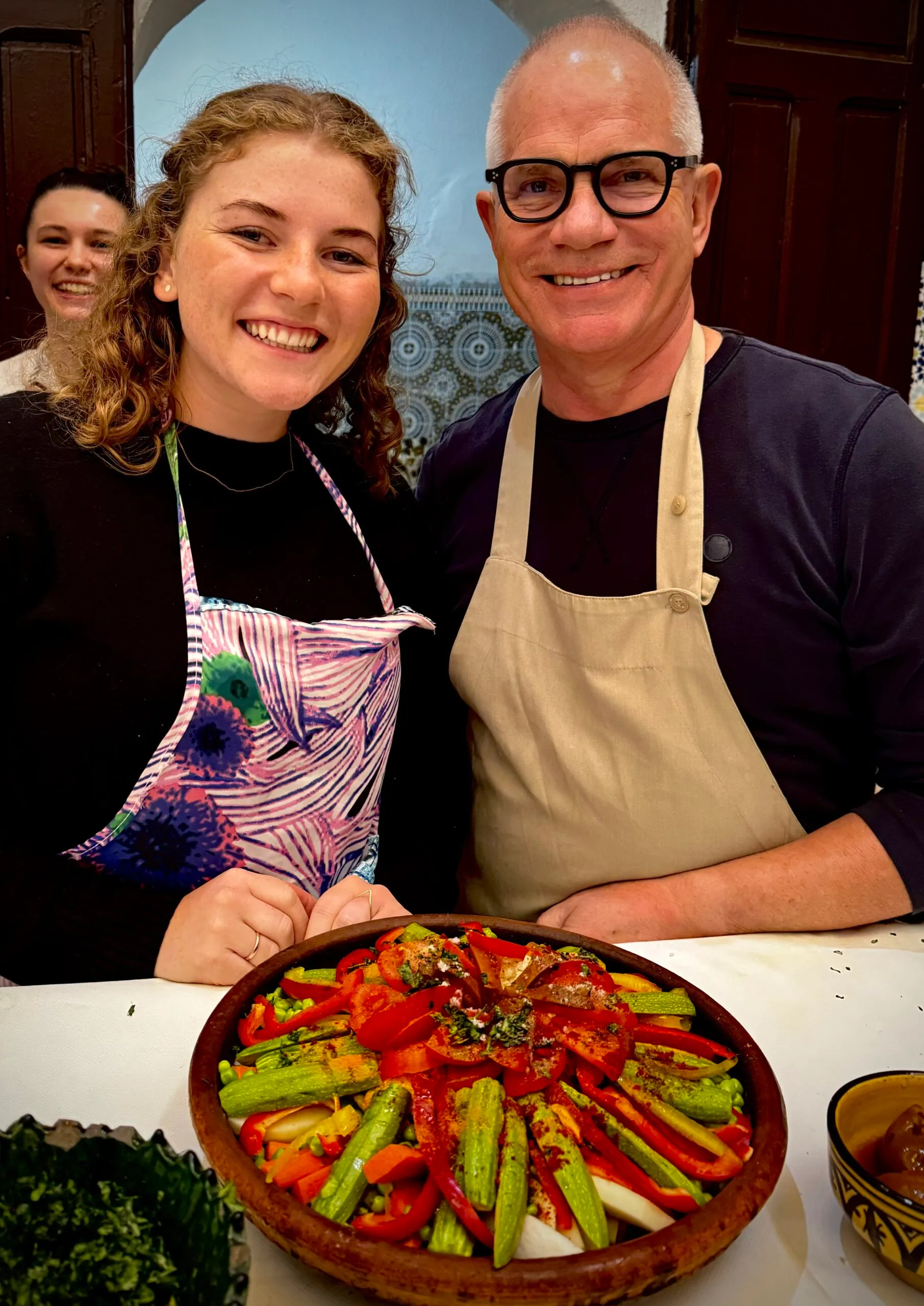Moroccan food is a vibrant and diverse tapestry of flavors, reflecting the country’s rich cultural heritage and history. It combines elements from Berber, Arab, Andalusian, and Mediterranean traditions. Here’s a guide to some of the most iconic Moroccan dishes and culinary experiences:
1. Tagine
- Description: A slow-cooked stew made in a traditional earthenware pot. It can include a variety of ingredients such as lamb, chicken, fish, or vegetables, often combined with dried fruits, nuts, and aromatic spices.
- Popular Varieties:
- Lamb Tagine with Prunes: Sweet and savory with a rich sauce.
- Chicken Tagine with Preserved Lemons and Olives: Tangy and flavorful.
Moroccan Food
2. Couscous
- Description: Steamed semolina wheat granules, often served with a meat or vegetable stew. It’s a staple in Moroccan cuisine.
- Typical Accompaniments: Lamb or chicken, chickpeas, and a variety of vegetables.
3. Harira
- Description: A hearty soup made with tomatoes, lentils, chickpeas, and a mix of herbs and spices. It’s traditionally eaten during Ramadan to break the fast.
- Ingredients: Tomatoes, lentils, chickpeas, fresh herbs (cilantro and parsley), and spices (cinnamon, ginger, turmeric).
4. Pastilla (Bastilla)
- Description: A savory-sweet pie typically made with pigeon (though chicken is more common) and layered with a mix of almond paste, spices, and eggs, all wrapped in flaky pastry.
- Flavors: A blend of sweet and savory with a dusting of powdered sugar and cinnamon on top.
5. Mechoui
- Description: A whole lamb, seasoned and spit-roasted until tender. It’s often served at special occasions and festivals.
- Accompaniments: Bread, salads, and sometimes a spicy sauce.
6. Moroccan Salads
- Types:
- Zaalouk: A cooked salad made from eggplants and tomatoes with garlic, cumin, and olive oil.
- Taktouka: A mix of roasted peppers and tomatoes with spices.
7. Moroccan Bread
- Types:
- Khobz: Traditional round loaf often used to scoop up stews and salads.
- Msemen: Flaky, square-shaped flatbread often enjoyed with honey or as a savory accompaniment.
8. Moroccan Sweets
- Chebakia: Fried dough pastries coated in honey and sesame seeds, typically enjoyed during Ramadan.
- Ghriba: Almond or sesame seed cookies with a crumbly texture.
9. Mint Tea
- Description: Known as “Moroccan whisky,” it’s a sweet green tea brewed with fresh mint leaves and plenty of sugar.
- Serving: Traditionally poured from a height to create a frothy top and often enjoyed as a sign of hospitality.
10. Spices and Flavors
- Ras El Hanout: A complex spice blend that can include cinnamon, cumin, coriander, and cardamom.
- Harissa: A spicy chili paste that adds heat to many dishes.
Culinary Tips for Enjoying Moroccan Food:
- Embrace the communal style: Moroccan meals are often shared from a central dish, so it’s a great opportunity to experience the social aspect of dining.
- Be adventurous: Don’t hesitate to try a variety of dishes and flavors, even those that may seem unfamiliar at first.
- Enjoy the process: Moroccan meals can be elaborate and slow-cooked, so savor the experience of the flavors and aromas.
Whether you’re enjoying a traditional meal at a Moroccan home or dining in a restaurant, Moroccan cuisine promises a rich and flavorful experience that reflects the country’s diverse cultural influences.



